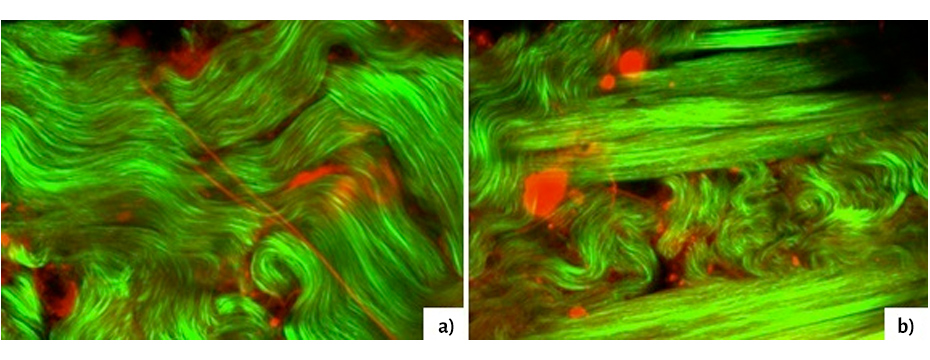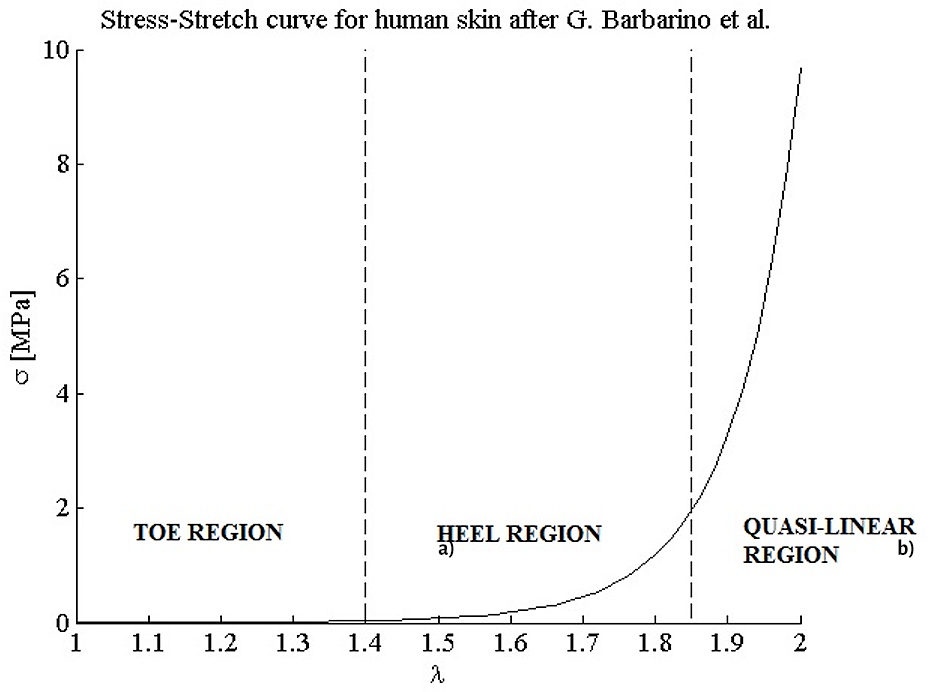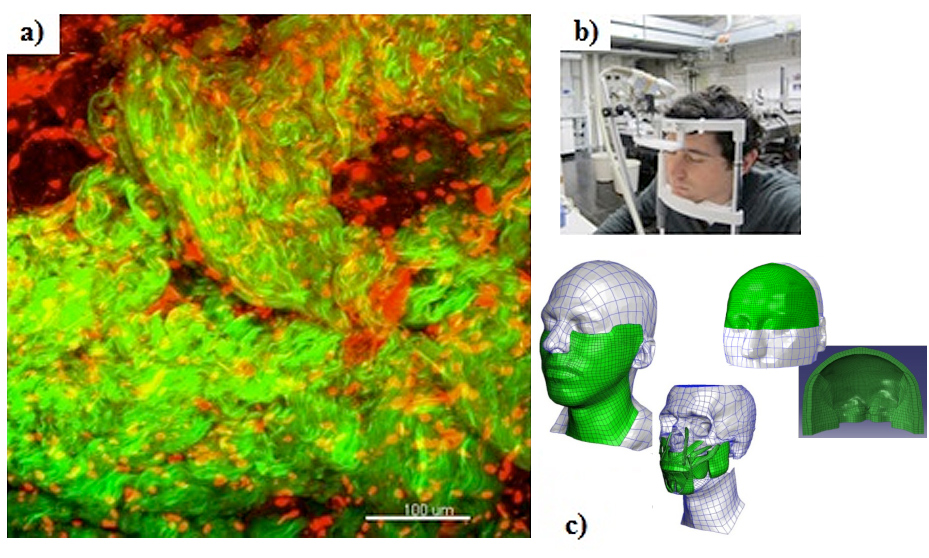Skin Multiscale Mechanics
Skin is the outermost and largest organ in living organisms; it is comprised of three layers and several sublayers. The three main layers are the epidermis, the dermis and the hypodermis. The function of this organ is twofold: on the one hand it provides protection from potential harmful factors (e.g. excessive thermal and mechanical stimuli), while on the other hand it allows for crucial interactions with the outside world (e.g. tactile sensations, friction, thermal balance and transpiration). Skin is also the center of several aesthetic concerns, due to its role of “external façade” for each individual. Thus, special interest is devoted by the scientific community to matters as aging, growth and re-growth of the tissue, as well as to the occurring and development of skin diseases.
Skin owes most of its peculiarities to its microstructure, which is characterized by the presence of a dense collagen network, located in the dermal layer and intertwined with a network of elastin fibers (Fig. 1). Not only the stress-strain behavior, but also phenomena as skin aging and the insurgence and evolution of the related diseases can be characterized with reference to this microstructure (Fig. 2).

Figure 1 – Multiphoton microscopy pictures of porcine skin. Second harmonic generated images of skin collagen and elastin networks in the a) unstretched and b) stretched (λ=1.5) configuration. The collagen network is shown in green, the elastin network is in red, and the stained cellular nuclei appear as red dots. The stretched configuration shows a collagen network which tends to align with the direction of the applied displacement, thus contributing to the tissue mechanical behavior.

Figure 2 – Example of the influence of collagen on the skin global behavior. The typical curve resulting from a uniaxial test is comprised of three regions: a toe region where the elastin structure is mainly responding and the collagen fibers are progressively aligned according to the external loading direction, a heel region where the collagen fibers, already aligned, straighten in response to the external load, and a third region, approximately linear, where these fibers are fully straight and aligned and are directly loaded. The curve shown has been reproduced by means of the material parameters published by Barbarino et al. [6t]
Our research focuses on the contribution of the skin microstructure to the global characteristics of the tissue. The investigation is carried out by combining in vivo and in vitro experimental techniques for structure visualization and for the assessment of the tissue mechanical properties (e.g. confocal and multiphoton microscopy, aspiration test) with finite elements simulation of the tissue behavior under specific loading conditions (Fig. 3).

Figure 3 – Examples of our investigative effort: a) in vitro multiphoton microscopy of porcine skin (green: collagen, red: elastin, red dots: stained nuclei); b) in vivo aspiration tests of facial tissues [13t]; c) finite element modeling of the face [6t].
Project Lead
Marco Pensalfini